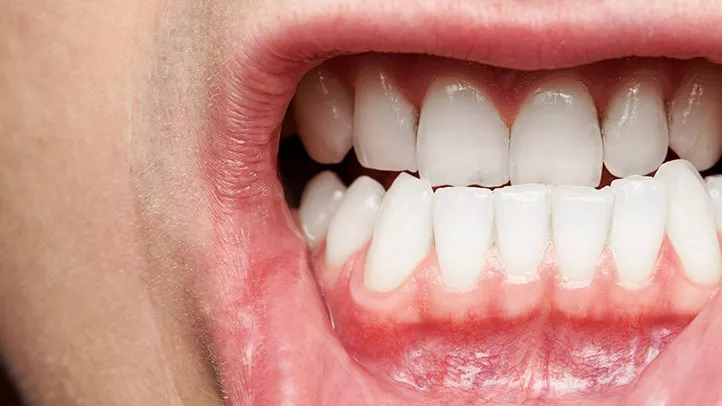Periodontal gum disease, commonly known as periodontitis, is a serious infection of the gums that can lead to tooth loss and other health complications if left untreated. This condition arises from the accumulation of plaque—a sticky film of bacteria—on the teeth and gums. Over time, the bacteria in plaque can cause inflammation and infection, damaging the tissues and bones that support the teeth.
Periodontal disease progresses through several stages, beginning with gingivitis, the mildest form, and advancing to more severe stages of periodontitis. Understanding the causes, symptoms, and progression of periodontal disease is crucial for its management and potential cure.
Causes of Periodontal Gum Disease
Periodontal disease is primarily caused by poor oral hygiene, which allows plaque to build up on the teeth. However, several other factors can contribute to its development, including:
Smoking: Tobacco use is a significant risk factor for periodontal disease. Smokers are more likely to develop periodontitis and have a lower response to treatment.
Genetics: Some individuals may be genetically predisposed to periodontal disease, making them more susceptible to gum infections.
Medical Conditions: Conditions such as diabetes, heart disease, and autoimmune disorders can increase the risk of developing periodontal disease.
Hormonal Changes: Hormonal fluctuations during pregnancy, menstruation, or menopause can make gums more sensitive and susceptible to infection.
Medications: Certain medications can affect oral health by reducing saliva production, leading to dry mouth and increasing the risk of gum disease.
SEE ALSO: How to Treat Advanced Periodontal Disease
The Importance of Early Detection and Prevention
Preventing periodontal disease is always better than treating it. Good oral hygiene practices, including regular brushing and flossing, are essential for removing plaque and preventing its accumulation. Regular dental check-ups and professional cleanings are also vital for maintaining oral health and detecting any early signs of gum disease.
Dental professionals play a critical role in educating patients about the importance of oral hygiene and providing guidance on proper brushing and flossing techniques. They can also identify individuals at higher risk for periodontal disease and offer tailored preventive measures.
Is There A Cure for Periodontal Gum Disease?
While there is no definitive “cure” for periodontal gum disease, it can be effectively managed and controlled with appropriate treatment. The goal of periodontal treatment is to eliminate infection, reduce inflammation, and prevent further damage to the gums and supporting structures. Treatment options vary depending on the severity of the disease and may include:
Non-Surgical Treatments
Scaling and Root Planing: This deep-cleaning procedure involves removing plaque and tartar from above and below the gum line (scaling) and smoothing the root surfaces to discourage further bacterial buildup (root planing). Scaling and root planing can effectively treat mild to moderate periodontitis.
Antibiotics: Topical or oral antibiotics may be prescribed to control bacterial infection and reduce inflammation. Antibiotic gels, mouth rinses, or oral medications can be used in conjunction with scaling and root planing.
Laser Therapy: Lasers can be used to remove infected tissue and bacteria from the periodontal pockets. This minimally invasive procedure promotes healing and reduces pocket depth.
Surgical Treatments
Flap Surgery: In more advanced cases of periodontitis, flap surgery may be necessary. This procedure involves lifting the gums to remove tartar deposits and reduce pocket depth. The gums are then sutured back in place to promote healing.
Bone and Tissue Grafts: If periodontal disease has caused significant bone or tissue loss, grafting procedures may be used to regenerate lost structures. Bone grafts, tissue grafts, or guided tissue regeneration techniques can help restore the supporting structures of the teeth.
Gum Grafting: Receding gums can be treated with gum grafting, where tissue from another part of the mouth or a donor source is used to cover exposed tooth roots and improve gum health.
Maintenance and Follow-Up Care
Effective management of periodontal disease requires ongoing maintenance and follow-up care. After initial treatment, patients must adhere to a strict oral hygiene regimen and attend regular dental check-ups to monitor their condition.
Periodontal maintenance visits typically involve professional cleanings, monitoring of pocket depths, and reinforcement of oral hygiene practices.
Patients with periodontal disease should also make lifestyle changes to support their oral health. Quitting smoking, managing chronic medical conditions, and maintaining a balanced diet can significantly improve treatment outcomes and reduce the risk of recurrence.
Innovative Approaches And Future Directions
Research in periodontal disease is ongoing, and new treatment approaches are continually being developed. Innovative therapies and technologies hold promise for more effective management of periodontal disease. Some of these include:
Regenerative Therapies: Advances in tissue engineering and regenerative medicine are exploring ways to stimulate the body’s natural healing processes to regenerate lost bone and gum tissue.
Growth factors, stem cells, and biomaterials are being investigated for their potential to enhance tissue regeneration.
Host-Modulation Therapy: This approach aims to modify the body’s immune response to reduce inflammation and tissue destruction.
Host-modulation agents, such as non-steroidal anti-inflammatory drugs (NSAIDs) and matrix metalloproteinase inhibitors, are being studied for their ability to manage periodontal disease.
Microbiome-Based Therapies: Understanding the role of the oral microbiome in periodontal disease is leading to the development of targeted therapies that aim to restore a healthy balance of oral bacteria. Probiotics, prebiotics, and antimicrobial peptides are being explored for their potential to promote oral health.
Genetic and Molecular Research: Advances in genetic and molecular research are uncovering the underlying mechanisms of periodontal disease. Identifying specific genetic markers and molecular pathways involved in the disease can lead to personalized treatment approaches and early intervention strategies.
Conclusion
While there is no definitive cure for periodontal gum disease, it can be effectively managed and controlled with appropriate treatment and diligent oral hygiene practices. Early detection and intervention are crucial for preventing the progression of the disease and minimizing damage to the gums and supporting structures.
Non-surgical treatments, such as scaling and root planing, antibiotics, and laser therapy, can effectively treat mild to moderate periodontitis. In more advanced cases, surgical treatments like flap surgery, bone and tissue grafts, and gum grafting may be necessary.

